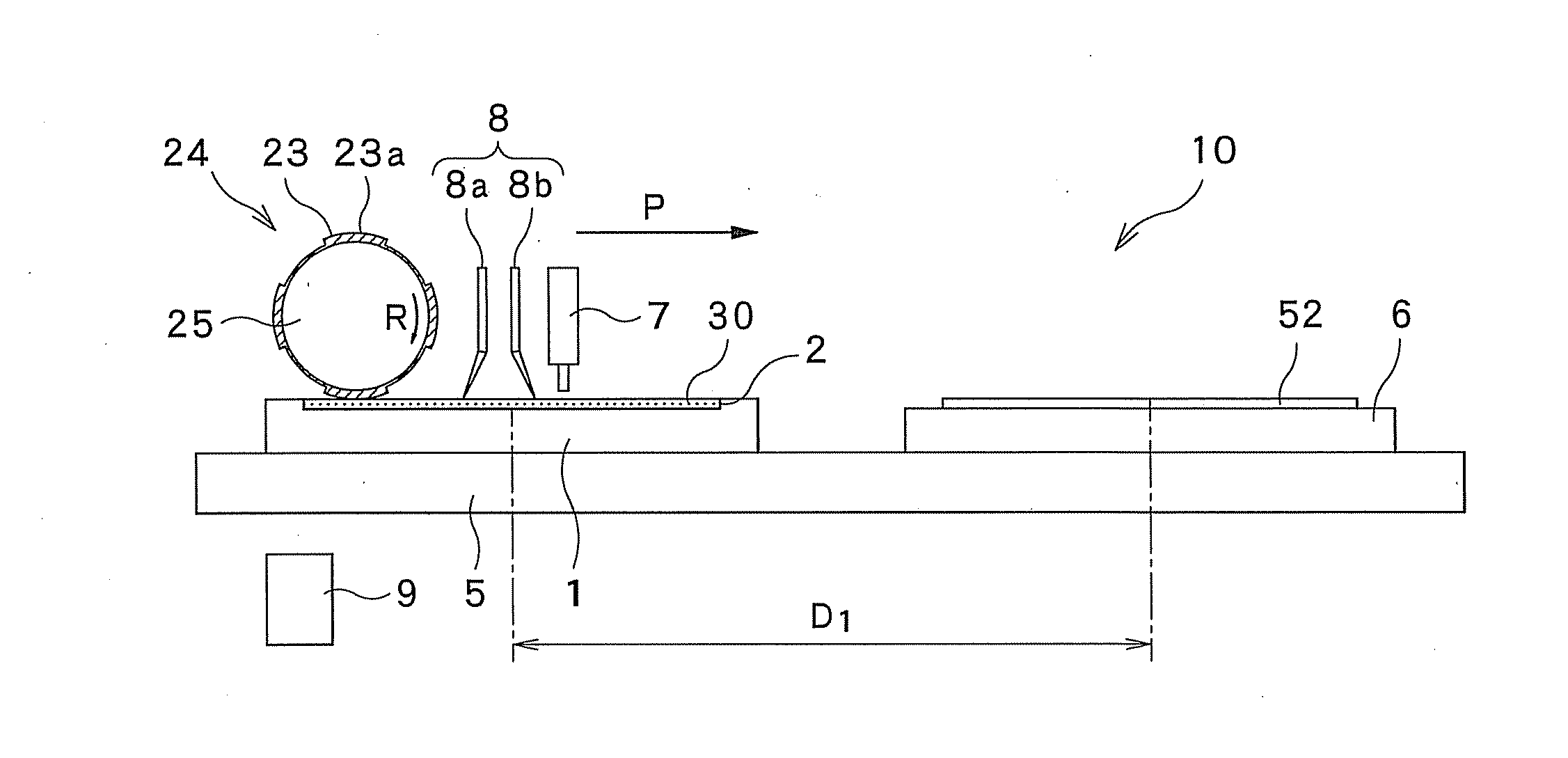Printing method, method for forming light emitting layer, method for forming organic light emitting device, and organic light emitting device
- Summary
- Abstract
- Description
- Claims
- Application Information
AI Technical Summary
Benefits of technology
Problems solved by technology
Method used
Image
Examples
examples
[0212]Next, the present invention is described in detail with examples and is not limited to the examples described below without departing from the gist of the invention.
first example
[0213]The ink 30 was printed on the substrate 52, while the rotational speed of the printing cylinder 24 included in the printing machine 10 is changed within a range of 10 rpm to 100 rpm.
[0214]As the ink 30, the following ink was used: ink that has viscosity of 80 cp (ink temperature: 23° C.) at the shear rate of the ink is 100 / second and a boiling point of 186° C. The ink 30 contains a solid of 2.5% by weight and a solvent that has a surface tension of 32 dyne / cm.
[0215]As the anilox plate 1, the following anilox plate was used: an anilox plate that includes cells 2 (the density of the cells 2 is 140 lines per inch) and in which the cells 2 have a depth of 40 μm and the proportion of the total area of the cells 2 to the area of a film-formed portion of the anilox plate is 75%.
[0216]As the flexographic plate 23 on the printing cylinder 24, a flexographic plate made of a water-developable resin material was used. In this example, the flexographic plate 23 has a resolution of 250 ppi ...
second example
[0224]While the resolution of the flexographic plate 23 on the printing cylinder 24 was changed within a range of 40 ppi to 250 ppi, the ink 30 was printed on the substrate 52. In this case, the rotational speed of the printing cylinder 24 that rotates on the anilox plate 1 was set to 20 rpm, while the rotational speed of the printing cylinder 24 that rotates above the surface plate 6 was set to 100 rpm. Other conditions were the same as the conditions in the first example, and description thereof is omitted.
[0225]The thicknesses of multiple portions of an object 30a made of the ink 30 and printed on the substrate 52 were measured, and the thickness variation rates of the printed object 30a were calculated. The calculated thickness variation rates are shown in Table 3. In Table 3, when the thickness variation rate is 5% or less, it is determined that the printed object 30a is passed. When the thickness variation rate is larger than 5%, it is determined that the printed object 30a fa...
PUM
 Login to View More
Login to View More Abstract
Description
Claims
Application Information
 Login to View More
Login to View More - R&D
- Intellectual Property
- Life Sciences
- Materials
- Tech Scout
- Unparalleled Data Quality
- Higher Quality Content
- 60% Fewer Hallucinations
Browse by: Latest US Patents, China's latest patents, Technical Efficacy Thesaurus, Application Domain, Technology Topic, Popular Technical Reports.
© 2025 PatSnap. All rights reserved.Legal|Privacy policy|Modern Slavery Act Transparency Statement|Sitemap|About US| Contact US: help@patsnap.com



